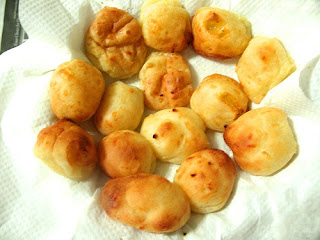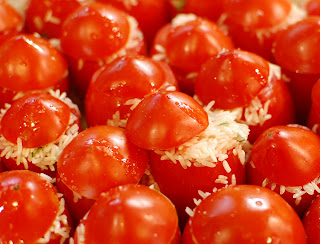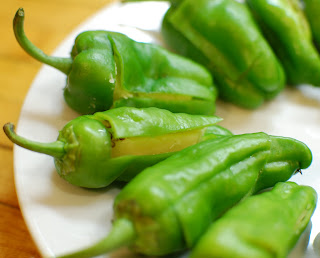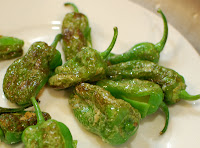With the tremors and pending hurricane season, we thought it might be time to do a little preparedness planning. With an old backpack in hand, we went through the house and placed a few items inside, just in case.

The initial pass was easy. We tossed in a pre-paid credit card, disposable rain ponchos, emergency heat blankets, a small plastic tarp, flashlight, candles, a lighter, Swiss army knife, duct tape, travel toothbrushes and paste, soap & shampoo samples. We also packed a small first aid kit with bandages, pain relievers, alcohol pads and tweezers. I considered adding some games, but decided the guys could play
Morra* or thumb wrestle; on second thought... I threw in a deck of cards (no batteries required).
Then we stopped at the pantry where the choices proved more difficult. Olive oil? How could we possibly live without that?
Denise’s peppers? No, the jars could break. Cans tuna, beans, and corn seemed like good ideas. Then again, pop-top” cans might leak or explode. Not to mention that canned goods are heavy and bulky. Dry items appeared to be the way to go; lightweight and easy to pack. Rice, pasta, dried beans, dried fruits and nuts, crackers, flavored drink mix, granola bars were all added to the list. I checked the expiration date on all items to be included. Storm season only lasts a few months and these dry items will be fine for that time.
These things were all fine in concept, but how to make a meal out of these things? Cajun spice, now we could make
red beans and rice. With some olive oil the possibilities would open up immensely. Aha! We had a small can of olive oil, so olive oil was added back to the stash. Salt, black pepper and a small wedge of Parmesan or Romano (which don’t need refrigeration because they are hard, aged cheeses) and we could make
Cacio e Pepe. Some anchovies (we could pack in a Ziploc in case of leakage), and crushed red pepper and we had the makings of
Spaghetti con Acciughe. This would give us the 3-day supply recommended by
72hours.org. The backpack was filled and set aside with the Coleman camp stove, L.L. Bean emergency weather radio (Thanks Mom!) and a few jugs of water.
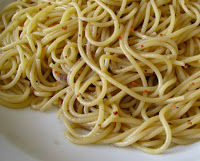 Spaghetti con Acciughe
Spaghetti con Acciughe - 1 lb. spaghetti
- 2 large garlic cloves, sliced
- 3 tablespoons of good quality extra-virgin olive oil
- 1 4-oz. can anchovy filets, chopped
- ½ - 1 teaspoon crushed red pepper (to taste)
- Parmigiano Reggiano, grated
Cook pasta in salted water following package instructions. While the spaghetti cooks, heat the olive oil in a pan on a medium heat. Add garlic and cook until fragrant and just starting to turn brown. Remove garlic pieces from oil and add chopped anchovies and with a wooden spoon, mash them until they are dissolved into the oil, then add the crushed red pepper reduce the heat and cook for another two minutes.
Drain pasta and dress it with the anchovy sauce. Serve with a light drizzle of olive oil and the grated Parmesan or Romano cheese.
We need to remember to pack some forks!! And, maybe a box (unbreakable) of wine and some cups?
______________________________________________________________________________________
*Morra is a hand game that goes back thousands of years to ancient Roman times and is still popular in Italy today. In the Bible, it may have been referred to as "casting lots." In ancient Rome, it was called micatio, and playing it was referred to as micare digitis; literally, "to flash with fingers." As time passed, the game became Morra. The game was so common in Rome that a proverb used to describe an honest person: "Dignus est quicum in tenebris mices," which means, "He is a worthy man with whom you could play micatio in the dark." There are two styles of play. Northern Italians play sitting while Southern Italian players stand and use their whole body and extend their arms to flash their fingers. The purpose of the game is to sharpen the mind while enjoying the company of friends. In the most popular version, players throw out a single hand, each showing zero to five fingers, and call out loud their guess at what the sum of all fingers shown will be. If one player guesses the sum, that player earns one point. In another version one person is designated the "evens" player while the other is labeled "odds". Players hold one hand out in front and count together to three (sometimes chanting "Once, twice, thrice, SHOOT!" or "One, two, three, SHOOT!") On three, both players hold out either one or two fingers. If the sum of fingers shown by both players is an even number, then the "evens" player wins; otherwise the "odds" player is the winner. Since there are two possible ways to add up to three, both players have an equal chance of winning.






